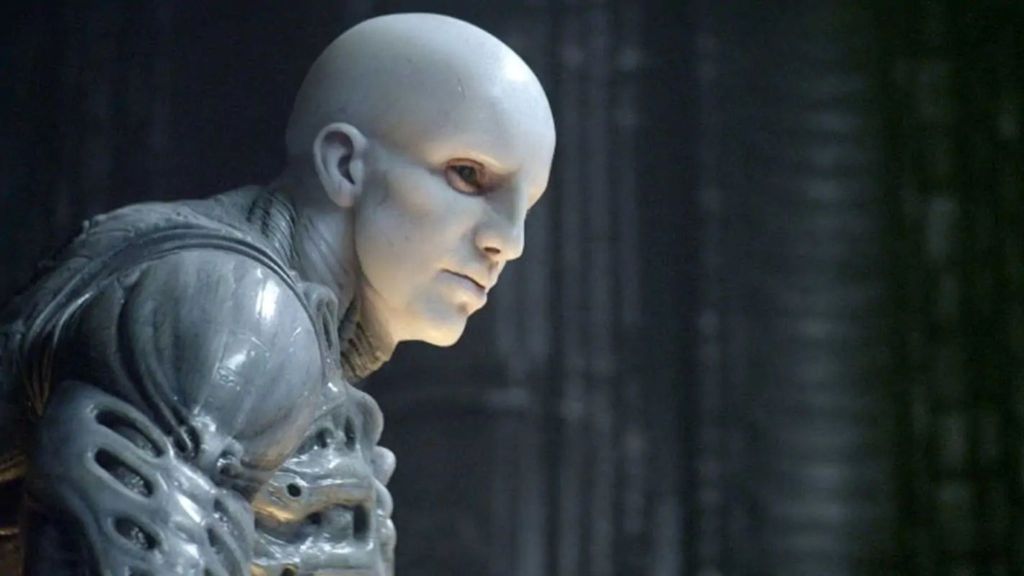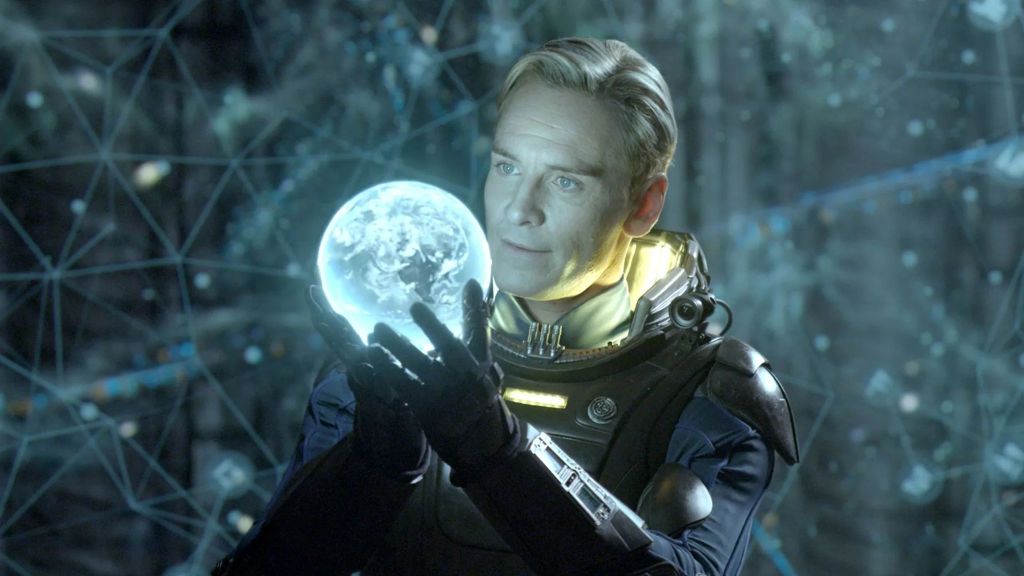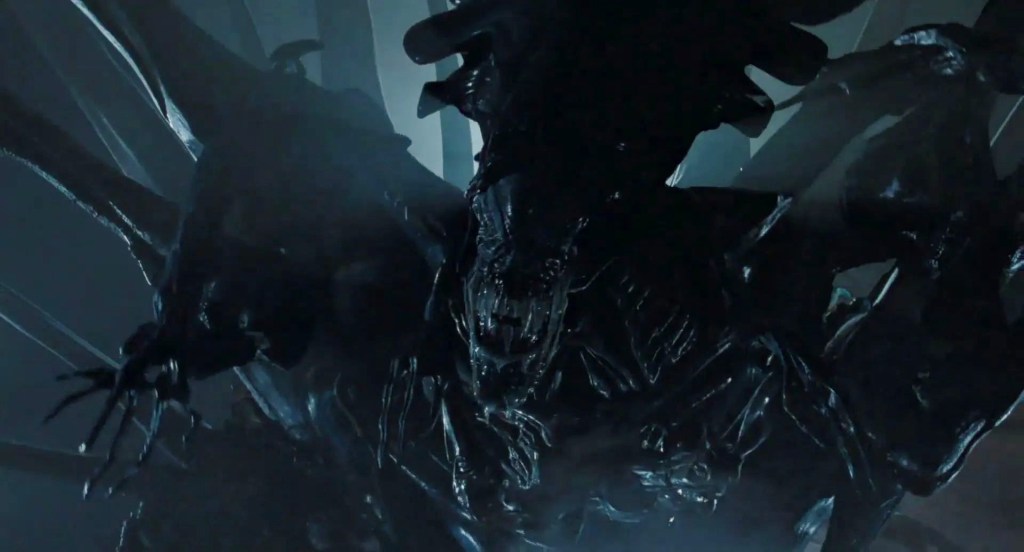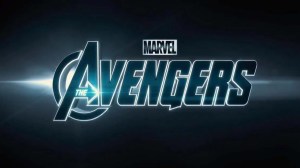Ridley Scott’s 2012 film Prometheus was poised as his grand return to the dark and terrifying universe he masterfully initiated with 1979’s Alien. In addition, Prometheus promised to delve into the origins of the iconic Xenomorph, the mysterious fossilized “Space Jockey,” and the derelict spacecraft found on LV-426. Of course, fans eagerly anticipated definitive answers to decades-old questions, expecting a clear through-line to Ellen Ripley’s (Sigourney Weaver) fateful encounter. However, Prometheus took a decidedly different trajectory. Instead of methodically connecting the dots to the original saga, it veered into philosophical explorations of creation, faith, and humanity’s cosmic significance, introducing the enigmatic Engineers and their volatile black goo mutagen. In doing so, the film spawned a host of new mysteries, many of which remain conspicuously unresolved by subsequent installments. This has left Prometheus feeling less like a direct foundational prequel and more like a parallel narrative existing in a familiar yet curiously detached segment of the Alien mythos.
Videos by ComicBook.com
The central frustration for many viewers arose from this perceived narrative detour. While Prometheus delivered stunning visuals and thought-provoking concepts, its plot threads frequently diverged from the established xenomorph lifecycle and the specific horrors of LV-426. The film concluded not with a clear lineage leading to the events of Alien, but with the emergence of its own unique proto-creature, “the Deacon,” and a fresh set of questions surrounding the Engineers’ ultimate agenda and the precise nature of their dangerous biological agent. The subsequent film, Alien: Covenant, attempted to bridge some of these narrative gaps, notably by attributing the creation of the xenomorph as we know it to the android David (played by Michael Fassbender). Nevertheless, even Covenant largely sidestepped many of the fundamental enigmas Prometheus posed about the Engineers, their motivations, and the broader implications of their technology.
The Alien Franchise Still Hasn’t Explained the Engineers’ Purpose

The opening moments of Prometheus present a visually breathtaking but puzzling prologue. Viewers witness a lone Engineer on what appears to be a primordial Earth, positioned beside a thundering waterfall. This towering figure consumes a dark liquid from a ceremonial chalice, triggering a violent and rapid disintegration of its body. The Engineer’s DNA then cascades into the water below – an act widely interpreted as the catalyst for life (or at least a significant evolutionary advancement) on the nascent Earth.
This sequence is majestic and horrifying, yet its precise meaning and the Engineer’s motivation are left deliberately ambiguous. The film leaves it unclear whether this was a ritualistic suicide, a noble sacrifice undertaken for a purpose beyond human comprehension, or if it represented a standard method employed by the Engineers for seeding life or terraforming uninhabited worlds through a deliberate act of genetic dispersal. Even if we consider this to be a deliberate seeding process, the Engineers’ ultimate objectives remain obscure, along with whether they were benevolent creators bestowing the gift of life or if this was merely one phase of a larger cosmic experiment with unknown consequences.
[RELATED: The Most Exciting Thing About Alien: Earth Is Not the Xenomorph]
The subsequent portrayal of the black goo mutagen as a destructive biological weapon, capable of birthing monstrous and aggressive lifeforms, casts a decidedly darker shadow over this initial act of apparent creation. Furthermore, the fact that the only Engineer in Prometheus proves to be aggressive towards humans and is willing to extinguish our species only makes things more puzzling. Subsequent films, including Alien: Covenant, have not revisited this pivotal scene or offered any further clarification on the Engineers’ early planetary seeding rituals or the philosophy behind them. The narrative focus shifted more towards the devastating consequences of their black goo on established lifeforms and David’s god-complex-fueled manipulations of it, leaving the original intent behind the Earth-seeding Engineer a lingering mystery.
What Is the Exact Link Between Engineers, Humans, and the Xenomorph Mutagen?

A cornerstone revelation within Prometheus is the genetic link established between humanity and the enigmatic Engineer species. Following the discovery of ancient star maps across disparate human civilizations by Dr. Elizabeth Shaw (Noomi Rapace) and Dr. Charlie Holloway (Logan Marshall-Green), which all point to the Zeta Reticuli star system, the scientists are convinced that the Engineers either directly created or significantly guided human evolution. This hypothesis gains substantial weight when, aboard the research vessel Prometheus on the desolate moon LV-223, the ship’s advanced analytical systems confirm a 100% DNA match between modern humans and the severed Engineer head recovered from the alien structure. However, the precise “how” and “why” of this connection, along with its complex implications concerning the volatile black goo mutagen, are not fully addressed by the film or its sequels.
Prometheus strongly implies that the Engineers, at some point after humanity’s genesis, decided to eradicate their creation. This is evidenced by the discovery that the temple complex on LV-223 was, in fact, a military installation, housing vast quantities of the black goo stored in urn-like containers, seemingly prepared for deployment to Earth before an internal outbreak catastrophically halted their mission. However, the film does not explain why a species would go to the effort of creating life, only to later seek its utter annihilation.
To complicate things, Prometheus does not reveal whether the black goo is something the Engineers developed long after humanity’s emergence, or if it is an intrinsic component of their own biology and, by extension, potentially ours. When Dr. Holloway is infected with a minuscule quantity of the black goo, it initiates a rapid physiological transformation, ultimately leading to his death and the impregnation of Dr. Shaw with the Trilobite, a large, cephalopod-like creature that functions as a proto-facehugger. In addition to highlighting humanity’s vulnerability to the black goo, it also suggests that the xenomorphs are somehow derived from our own DNA. Alien: Covenant shifts its focus to the mutagen as a bioweapon meticulously refined by David, but it does not delve deeper into the fundamental genetic relationship between Engineers and humans, nor does it clarify whether humanity’s specific DNA makes us uniquely susceptible or simply another viable host for the pathogen’s myriad horrors.
Prometheus Makes the Iconic Xenomorph Lifecycle More Confusing

The Alien franchise is famed for its terrifyingly unique xenomorph lifecycle, a multi-stage biological horror show that begins with a leathery “Ovomorph,” or egg, which houses a parasitic “facehugger.” Upon detecting a suitable host, the facehugger latches onto its victim, implanting an embryo. After a gestation period, a “Chestburster” violently erupts from the host’s chest, rapidly maturing into an adult xenomorph, often a Drone or Warrior. This cycle is typically perpetuated by a massive Xenomorph Queen, as memorably introduced in Aliens, who is capable of laying vast quantities of eggs, thus establishing a hive.
Prometheus, however, concluded not with the birth of a classic xenomorph but with the emergence of a creature dubbed the “Deacon” (see image at the top). This creature graphically erupts from the chest of the last surviving Engineer after the Trilobite forcibly impregnated him. This lifecycle was markedly different from the franchise’s established lore, most notably lacking the queen, eggs, and the specific bio-mechanical aesthetic of the original xenomorph. Prometheus’s significant divergence complicated, rather than clarified, the xenomorph’s definitive lineage.

Alien: Covenant made a direct attempt to address this critical aspect of the lore by vividly portraying David’s horrifying experiments, first on LV-223 and later on the Engineer homeworld, Planet 4. David, who utilized the black goo pathogen on various unfortunate lifeforms – including the Engineers and the unsuspecting human colonists of the Covenant – is depicted as the malevolent creator of the Ovomorphs and the parasitic facehuggers they contain. He essentially bio-engineers the “perfect organism” through meticulous and cruel experimentation with mutagenic black goo and different live hosts.
This explanation, while providing an origin for the classic xenomorph form, still leaves a significant gap in the established franchise lore, specifically concerning the existence and origin of the Xenomorph Queen. Neither Prometheus nor Covenant clarifies whether the Queen represents an unforeseen evolutionary step beyond David’s design, or if her existence is a separate strand of the creature’s development that David merely tapped into or replicated. As a result, the complete genesis of the iconic xenomorph lifecycle is still partially shrouded in darkness.
What unanswered question from Prometheus do you find most intriguing or wish the Alien franchise would finally address? Join the discussion in the comments!









